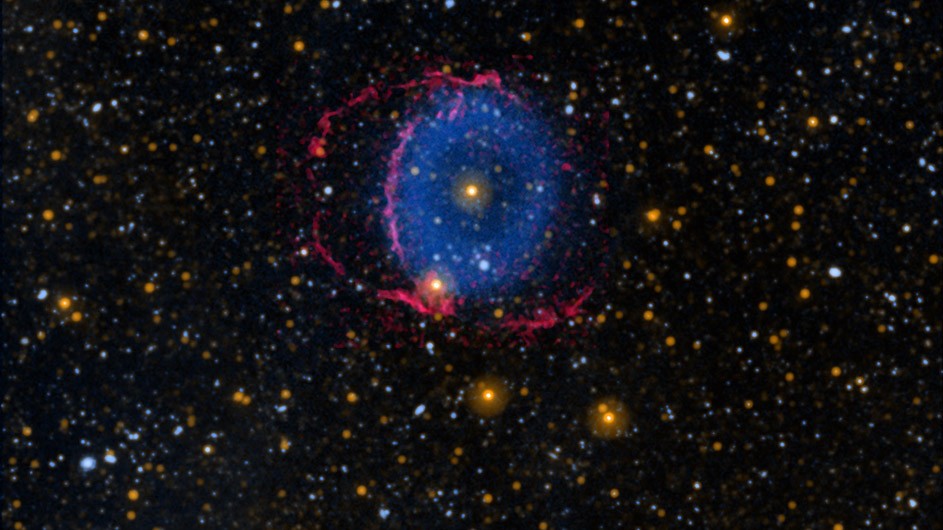Sixteen years ago, a team of astronomers working for NASA's Galaxy Evolution Explorer mission, spotted a star with an unusual ultraviolet ring around it.
Nicknamed the “Blue-Ring” nebula because of its striking appearance, astronomers spent years scrutinizing the object, both on the ground and in space, until slowly a picture of the star’s hidden past began to emerge.
In a new study, published in the journal Nature, a team of scientists at California Institute of Technology and Columbia University offers an explanation for the formation of the blue ring around the star, named TYC 2597-735-1.
They make the case that the ring is actually the base of a cone-shaped cloud of debris formed after a sun-like star collided into, and engulfed, a smaller stellar companion. The scientists further explain several unusual properties of the star at the center of the nebula as being the end product of such a stellar merger, which they estimate occurred several thousand years ago.
“Stellar mergers are a relatively common occurrence in our Galaxy,” said Brian Metzger, a theoretical astrophysicist and professor in the Department of Physics at Columbia, who is a lead author of the Nature paper. “But this is the first time we’ve discovered such a merger at this critical, revealing stage in its evolution.”
Metzger, an expert on cataclysmic astrophysical events, including stellar mergers, was approached in 2017 by Caltech to join a team of observational astronomers in an effort to interpret the ring nebula and forge an explanation.
The project was right in Metzger’s wheelhouse. “I was working on predictions for the observational appearance of stellar mergers when [the Caltech astronomers] approached me,” he said. “I had immediate suspicions as to what they were seeing.”
From there, the work proceeded quickly. “It wasn’t just that Brian could explain the data we were seeing; he was essentially predicting what we had observed before he saw it,” said lead study author Keri Hoadley, the David and Ellen Lee Postdoctoral Scholar in Physics at Caltech. “He’d say, `If this is a stellar merger, then you should see X’; and it was like,`Yes! We see that!’”
Metzger said collaborating with a dynamic team of diverse talents is rewarding, especially when the work has an impact on the field.
“This finding not only explains a single mystery,” Metzger said. “It sheds new light on how such mergers occur, the impact they have on their large-scale environments, and the detailed properties of the final merged star.”
Read the release from the Jet Propulsion Laboratory (JPL) for NASA, California Institute of Technology

